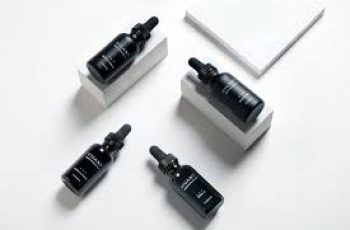6 Occasions When You Think You Don’t Need SPF, But Really Do
I am someone who is cursed/blessed with a very fair complexion. While my friends grow a few shades darker in one beach-bummed afternoon, it takes me the entire season to notice a couple of new freckles added to the collection on my forearms. Surprisingly though, I am still schooling many on the incidental occasions you think you don’t need sunscreen, but really (really) do.
As we quickly bid adieu to a low UV index, replaced by a sweaty and scorching couple of months, here’s a humble reminder of the daily activities that still require sunscreen.
You’re behind the wheel
Risk: High
Glass does block most (not all!) UVB rays, so while you may not get sunburned through the window, UVA rays can penetrate and they’re the ones that contribute to ageing and the development of skin cancer. If you’re driving often, or for long periods of time (like, that Byron Bay road trip you have planned) you should be applying sunscreen to all exposed areas.
You’re on an aeroplane
Risk: Low
It’s possible! Truly! Like cars, the glass windows on an aeroplane do a great job of blocking most UVB rays, but for anyone sitting at the window seat (for hours on end, might I add) those UVA rays can still penetrate. Cloud cover too, which is commonplace at high altitudes, can reflect UV rays and amplify the sun damage. Pull down that shade in between checking out the view, and ensure you’ve applied SPF protection prior to, and throughout the flight.
You’re working in an office
Risk: Low
The risk of sun exposure while working indoors or at the office is low, but if you happen to man a desk quite close to a window, this is when we encourage you to think again! Any form of direct sunlight requires sun protection; clothing in this case, might be sufficient, but a layer of SPF on the face, shoulders, arms, hands, is going to eliminate the potential for prolonged sun damage (sun spots, pigmentation, wrinkles etc).
You’ll ‘only be outside for 5 mins’
Risk: Medium
Forgetting to apply your sunscreen for the occasional short outing – commuting to work, ducking to the post office, lining up for a lunchtime bagel – isn’t the end of the world, however if you do this daily the sun damage starts to accumulate. Think of having to add up all those 5 minute occasions come the end of the year…that’s hours in the sun. Always better to be safe than sorry.
You’re under the beach umbrella
Risk: Medium
Umbrella shade (no matter how cute, colourful, frilly) may not provide sufficient protection if you’re thinking of setting up camp for a solid few hours. While they work to prevent direct UV rays, they don’t block all scattered and diffused rays, so the skin can still burn. It’s essential to use a combination of sun protection methods, instead of simply relying on one, so think SPF and shade, plus sunglasses, a hat, and protective clothing.
It’s overcast
Risk: High
A myth! A misconception! A tall tale! Ultraviolet rays penetrate right through the clouds to reach your vulnerable skin, so spending time outdoors on an overcast day, without broad spectrum protection, is very risky. Before you head outdoors, always have a look at the UV index as the most accurate guide; three or higher and you should be boasting a healthy layer of SPF 50 protection.
It’s after 5pm
Risk: Low
The sun’s rays are strongest between 10am and 4pm, with the potential for sunburn (UVB rays) diminishing little by little every hour after that. The closer to sunset the weaker the sun may appear, but as long as there’s daylight, UVA rays will maintain their intensity. Where you live will also affect how strong the sun is, soooo if the Aussie summer is anything to go by we’ll still be slip, slop, slapping at all hours of the day.
DQH Can I use salicylic acid first and then vitamin C?
It’s easy to create a skincare routine, but knowing how to use it is another thing entirely. In most cases, if you’re not getting the desired skin results, it could be due to the layering of conflicting ingredients. So, is it possible that salicylic acid and vitamin C are such ingredients? Or are these active ingredients the duo that’s been missing from your skincare routine? If you want answers, stick around because today we are going to explain the benefits of salicylic acid and vitamin C and how they can be used in your daily life.
What are the benefits of salicylic acid for skin?
Salicylic acid is one of the most commonly used beta hydroxy acids and is favored by many people with oily, acne-prone skin. This acid is derived from willow bark, and unlike its water-soluble relatives (called alpha-hydroxy acids), salicylic acid is oil-soluble, which means it can penetrate deeper into the lower layers of the skin. Once it reaches the lower layers, it can help unclog pores of excess sebum, dirt, bacteria, debris, and impurities. This results in clearer skin tones and greater definition.
Not only does salicylic acid benefit the underlying layers, but the outer surface of the skin benefits as well. When applied to the skin, salicylic acid removes the buildup of dead skin cells. This is accomplished by breaking the bonds that hold dead cells to the surface. Over time, this can cause the complexion to look dull and prone to acne, blackheads, and other blemishes.
If you’d like to learn more about salicylic acid and how it can improve your skin, check out this dedicated blog post from a beauty insider.
What are the benefits of vitamin C for skin?
Vitamin C is considered one of the most powerful antioxidants, which means it is very effective at fighting free radicals and preventing them from causing further skin damage. Examples of free radicals include pollution, central heating, UV rays and harsh climate. They attack proteins, fats and cell membranes as soon as they come into contact with the skin, causing signs of premature aging such as fine lines and wrinkles as well as hyperpigmentation, flaky patches of skin and loss of elasticity.
Many people usually prefer to use vitamin C in their morning routine as this ingredient gives the complexion a radiant glow. You’ll also find that vitamin C can target areas of hyperpigmentation, plumping the skin and reducing the appearance of fine lines and wrinkles.
The thing about vitamin C is that there are a lot of outdated studies going back to the 1950s that describe vitamin C as an unstable skin component. Thanks to improvements in modern technology, this is no longer the case as all products now contain a stable form of vitamin C.
Visit The Beauty Insider to learn more about vitamin C. So please check out our blog post.
Can I use salicylic acid first and then vitamin C?
Yes, you absolutely can. In fact, it’s thought that using salicylic acid before using vitamin C ensures it penetrates faster and works faster.
This is an efficient way to utilize two power sources, and the reason has to do with pH. For example, the skin’s natural pH is about 4.7, making it slightly acidic. Salicylic acid and vitamin C are also both acidic, and you’ll find that vitamin C is absorbed quickly into the skin. Therefore, using salicylic acid beforehand can increase the acidity of the skin and allow vitamin C to penetrate into the skin faster.
While this is considered an effective way to combine two powerful ingredients, you need to be aware of your skin type and how it reacts to certain active ingredients. Even people with perfect, normal skin can experience skin sensitivity and irritation. Therefore, always consult a doctor or dermatologist before using any new products on your skin.
It’s also important to follow skin application rules. In this case, you need to use the product correctly to ensure you get the best results for your skin. If you’re not sure what I mean, the basic rule for skin is to start with the thinnest consistency and work your way up to the thickest consistency. This prevents a barrier from forming on the surface, preventing other active ingredients from penetrating the skin.
Can I use salicylic acid at night and vitamin C in the morning?
Yes, absolutely, this is considered the most effective way to get returns without any adverse side effects. This is because there is enough time between applications to ensure that the skin’s pH levels return to balance.
You’ll also find that Vitamin C is rich in antioxidants and is perfect for use in the morning to ensure your skin is protected and looking its healthiest. Due to the small size of salicylic acid molecules, it is an acid that is able to reach the deepest parts of the skin. While this is effective at keeping skin clear, it also increases the risk of irritation and photosensitivity. Therefore, many people prefer to use powerful BHAs in their evening routine without exposure to UV rays, pollution, or harsh weather.
Warning: If you avoid using sunscreen every day, none of these ingredients will do what your skin needs. The combination of chemical peels and powerful ingredients increases the risk of further damage to the skin’s surface. Use SPF 50 every day to keep your skin protected and your lipid barrier healthy, even on cloudy days, keeping your skin in top condition.



